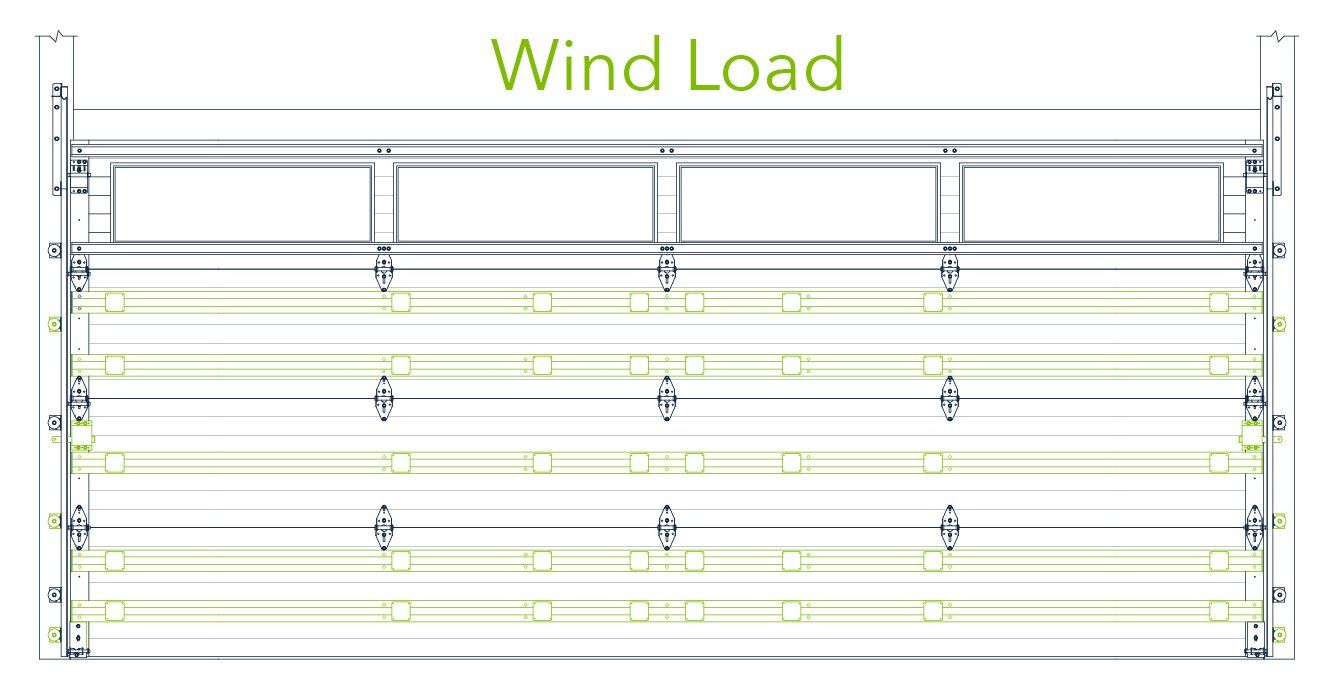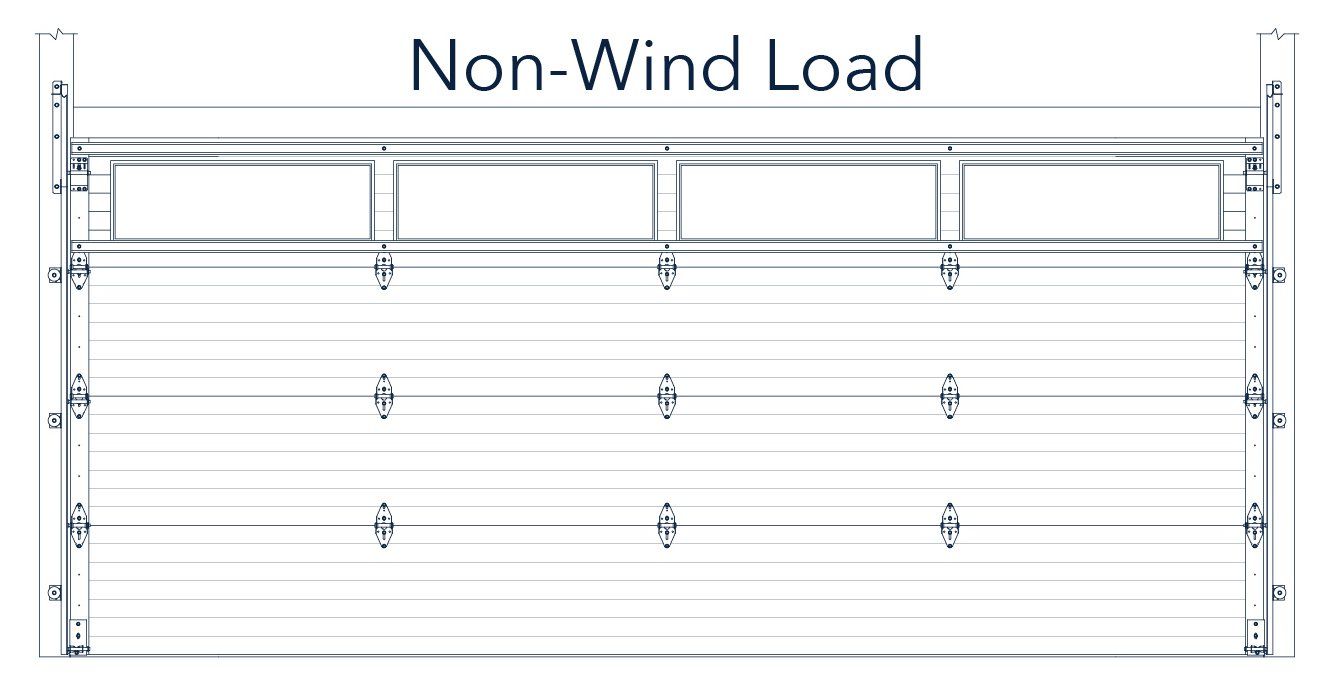Wind Load

Slide title
Button
Slide title
Button
Be Prepared.
Wind Load
Wind Load
The need for higher performance doors, as in wind load and impact resistant, is growing beyond the coastal regions due to the US adopting the International Building Codes (IBC) and due to an increase in the consumer's general knowledge about product performance.The ability to combine curb appeal and performance is one of Haas Door’s strengths. We know the value a beautiful door can bring to your home, and the importance of it protecting your home in storm conditions. See how well Haas Door garage doors performed in this before and after video.
Determine the Requirements for the Garage Door
Determining what is required can be challenging if you don’t know the steps. A Haas Door dealer will be able to assist homeowners and ensure the correct product is being used.
1.
Determine the Risk Category. They are defined based on the nature of the occupancy.
2.
Contact your local municipality building official for the specific map of your area to determine the Minimum Wind Speed (MPH)
required for your location.
3.
Determine the Exposure Category
based on the building location.
4. Determine the Mean Roof Height (MRH)
(single or double story) of the building.
5.
Find the required Design Pressure
based on the previous information gathered from Steps 1,2,3, and 4 using the charts provided by Haas Door in the Haas Door Florida Wind Load Brochure.
RISK CATEGORIES
Risk categories are based on the type of building and occupancy.
Category I:
Buildings such as agricultural and storage facilities representing a low hazard to human life.
Category II:
All buildings not listed in Categories I, III and IV. This is the default for typical buildings.
Category III:
Buildings such as schools, nursing homes, public facilities, power generating, and water supply installation that represent a substantial hazard to human life.
Category IV:
Essential facilities, such as hospitals, fire and police stations, shelters, airport control towers, and defense installations.
BUILDING CODES AND JURISDICTION
Even though most building codes used in the US are based on the IBC, some states have their own codes that must be followed. All codes are based on the same standard of American Society of Civil Engineers that provides consistency across the United States. It is essential to know what jurisdiction the project falls under, such as city, county, or state because the building official is responsible for the interpretation of the code. Always check with local building officials to be sure.
EXPOSURE CATEGORY
An exposure category (B, C, or D)
is one of the main factors in determining design pressures. It is a condition that adequately reflects the location characteristics of ground surface irregularities for the site for the structure. The exposure category is used in calculating the required design wind pressures for a structure with exposure B yielding the lowest wind pressures and exposure D yielding the highest wind pressures.
Exposure B
applies to urban and suburban areas, wooded areas or other terrains with numerous closely spaced obstructions having the size of single-family dwellings or larger. Exposure B is typically associated with site locations in a residential subdivision. Most site locations are assumed to be Exposure B unless the site meets the definition of another type of exposure.
Exposure C
applies to open terrain with scattered obstructions having heights generally less than 30 feet extending more than 1,500 feet from the building site. Exposure C includes flat open country, grasslands, and shorelines in hurricane-prone regions.
Exposure D
applies to flat, unobstructed areas exposed to wind flowing over open water (excluding shorelines in hurricane-prone regions) for a distance of at least 1 mile. Exposure D includes shorelines in inland waterways, the Great Lakes, and coastal areas of California, Oregon, Washington, and Alaska. Exposure D extends inland from the shoreline a distance of 1,500 feet or 10 times the height of the building or structure, whichever is greater.
WIND PRESSURES (psf) vs. WIND SPEED(mph)
Wind pressures represent the force exerted by the wind on a structure. Garage doors are tested using these pressures (Design Pressures) because they consider many factors, besides wind speed, when calculating them. These factors include wind speed, mean roof height, door area, exposure categories, and other criteria. The wind pressure will give a more accurate requirement for a specific building site.
POSITIVE and NEGATIVE PRESSURES
Storms generate both positive and negative pressures on a garage door. Positive pressures try to push the garage door in, while negative pressures try to pull the garage door out. Haas Door garage doors are rated for both and are listed on the garage door drawings. Any door with a design pressure above what is required may be used.
The U.S. has many high wind speed zones that have stricter requirements. Areas susceptible to hurricanes may require impact-resistant product. Impact resistant refers to the ability of the garage door and garage door glazing to resist penetration from flying debris during a high wind event.
Haas Door THE BEST OF BOTH WORLDS
Haas Door has the best of both worlds - design choices and superior performance. We have the aesthetics you are looking for to match the garage door to your home, making it an impactful curb appeal statement. With all the Haas Door options, we can match wood grains, window placement patterns, or the style of grills in the windows. These options can take the garage door from a necessity into an aesthetic choice that accents the home architectural detail or facade style. Also, replacing a garage door is the best renovation investment. It provides the highest return on the money spent
on upgrading your home making the project a smart choice. It practically pays for itself in resale value.
Haas Door wind load doors are designed to perform beyond a standard garage door. Additional hardware and strutting are needed to ensure the garage doors are meeting the required pressures. Our wide range of wind load product provides selection options with a high insulation factor and air infiltration seals for added thermal performance. See the comparison drawing below to understand some of the primary differences in standard garage doors and wind load doors.
320 Sycamore, Wauseon, OH
320 Sycamore, Wauseon, OH














